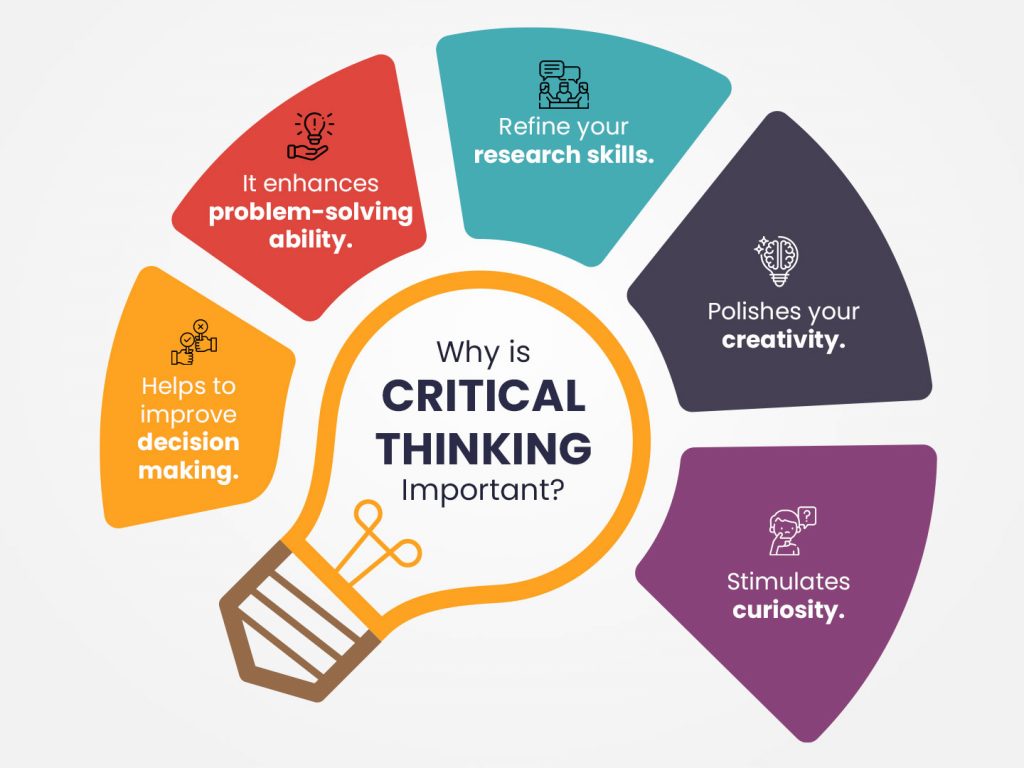Schools are essential in assisting students in becoming future-ready in today’s digital age since education is experiencing a transformation. Parents and guardians must consider schools that encourage critical thinking and creativity and embrace digital change as they search for the best CBSE school for their child’s education. In this guest post, we will discuss the importance of these fundamental education components and emphasize how using modern technology may improve the learning process. Learn how the best CBSE schools are setting the way for a comprehensive education that equips students for success in the twenty-first century.
Critical thinking has emerged as a crucial talent for students to successfully manage the complexity of life in today’s ever-changing world. It enables learners to analyse, evaluate, and critically think about knowledge beyond memorizing facts. We will examine the value of critical thinking, creativity and digital transformation in the classroom and how it affects students’ future achievement and intellectual development.
Developing Problem-Solving Skills: Critical thinking gives students the tools to address issues methodically and analytically. Students are taught to go deeper, find the root causes of problems, and come up with novel solutions rather than accepting answers that are only on the surface. Students who regularly engage in critical thinking are confident to tackle problems and effectively navigate difficult situations.
Promoting Critical Thinking and Effective Communication: Critical thinking and effective communication go hand in hand. Critical-thinking students can present their thoughts and arguments convincingly. By enhancing their communication abilities, students may collaborate and take the lead confidently to convey their ideas in various circumstances. Critical-thinking Students are capable of persuading audiences with their ideas and arguments. They learn how to engage in civil and fruitful dialogue while actively listening and considering other points of view. Students may cooperate and take the lead confidently to communicate their ideas in various situations by developing their communication skills.
The capacity to generate fresh and worthwhile ideas is referred to as creativity. It is supported by mental operations, including lateral thinking, analogy reasoning for novel answers, open-ended problem solving, and using judgement to evaluate novel concepts.
Young children may explore new ideas, expand their imaginations, practice problem-solving, and discover what happens due to their experiments via creative expression. It tells children that their skills and talents are highly valued and assists them in learning what they enjoy doing the most. This can support children in coping with their emotions while also enabling them to develop self-confidence, communication skills, and a sense of identity. Children may experiment with ideas, actions, and materials via creative activities, which can also offer good chances for problem-solving, teamwork, and negotiation – all of which are essential life skills as they age. The creative process facilitates the development of a strong sense of self, which also offers an opportunity to appreciate a child’s individuality.
The vast breadth of digital transformation in education, which includes interactions with students, staff, and parents, is a typical problem. Still, it is also what makes good digital transformation so significant. While it focuses on the classroom and learning settings, it significantly impacts everyone and everything in the school, including people, procedures, and technology. Leading examples of digital transformation initiatives in post-secondary and K–12 institutions include:
Adapting to remote operations: Due to the epidemic, schools have had to quickly move their teaching, learning, and operational settings to remote locations. This has improved schools’ operational efficiency and created a sizable pool of resources from which to choose for various courses, age groups, and other demographics.
Utilizing data: Data analysis has grown to play a significant role in digital transformation, aiding businesses in better comprehending the wants and preferences of their consumers. Similar opportunities exist in education to use data to examine student performance in more depth, modify instruction to swiftly address problem areas, and develop a more thorough understanding of student needs.
These abilities help children improve in school and prepare them for jobs heavily relying on technology. Kids also acquire a flexible and resilient attitude as they learn to accept new technology and refresh their abilities. By examining information, working through difficulties, and drawing logical conclusions, students skilled in critical thinking are better prepared to handle a complicated and dynamic environment. The ability to think creatively, articulate oneself, and be imaginative helps learners approach problems from different perspectives and develop novel solutions. On the other hand, digital transformation creates opportunities by enhancing knowledge accessibility, fostering cooperation, and refining the digital literacy competencies required for success in the digital age. Teachers who value critical thinking, promote creativity.
In choosing the best CBSE school for their child’s education, parents and guardians must consider institutions that respect critical thinking, foster innovation, and embrace digital change. By encouraging these fundamental qualities, CBSE schools establish a learning environment that motivates children to develop into lifelong learners, imaginative thinkers, and self-assured people ready to thrive in the twenty-first century. Explore the top schools for admission that place a premium on critical thinking, creativity, and technological advancement and embark on a path of a complete education that prepares students for success in a changing and interconnected world.
